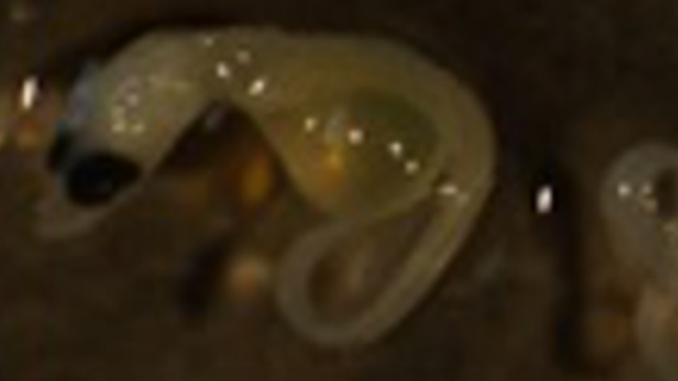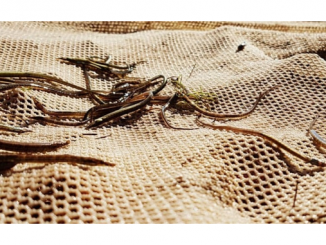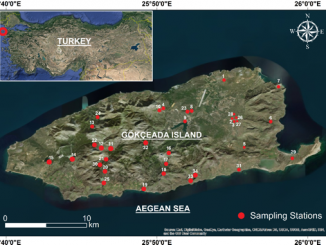
Paper category: Original research paper
Corresponding author: Burcu Taylan (burcu.taylan@ege.edu.tr)
DOI: 10.1515/ohs-2018-0008
Received: 22 June 2017
Accepted: 12 September 2017
Full text: here
Citation (APA style):
Abstract
The paper presents the results of research on the reproductive biology of Syngnathus abaster – a species distributed in Çandarlı Bay. For this purpose, seine nets were collected from a depth of 0.5–2 m in 15 minute periods between April 2013 and March 2014, and a total of 185 individuals were sampled. It has been determined that 94 individuals (50.81%) were females, 79 were males (42.70%) and 12 were immature (6.49%). The sex ratio was 1:0.84. The average length values in female, male and immature individuals were 111.5 ± 7.35, 109.9 ± 11.08 and 79.8 ± 5.30 mm, respectively. The maximum mean surface water temperature is in spring and summer seasons. When Gonadosomatic Index (GSI%) values were examined, the spawning period of the species was indicated as spring and summer. Three groups of species were identified as maturing (diameter: 0.61–1.20 mm), mature (diameter: 1.21–1.70 mm) and hydrated oocytes (diameter: 1.71–2.10 mm) in ovaries of female individuals. The number of eggs in the brood pouch of pregnant male fishes was on average 48 (mean ± SD = 48 ± 14.09 eggs, range: 23–78 eggs). The hydrated oocyte/total length relationship was: y = 0.8651x – 84.332 (n = 14, r<sup>2</sup> = 0.64) and the number of eggs/total length relationship in the brood pouch of pregnant males was: y = 1.0168x – 67.715 (n = 33, r<sup>2</sup> = 0.58).




Bądź pierwszy, który skomentuje ten wpis